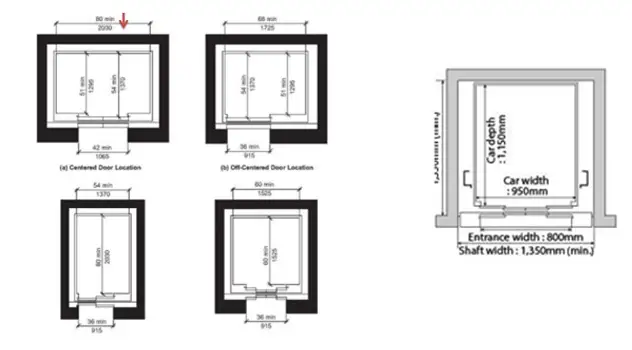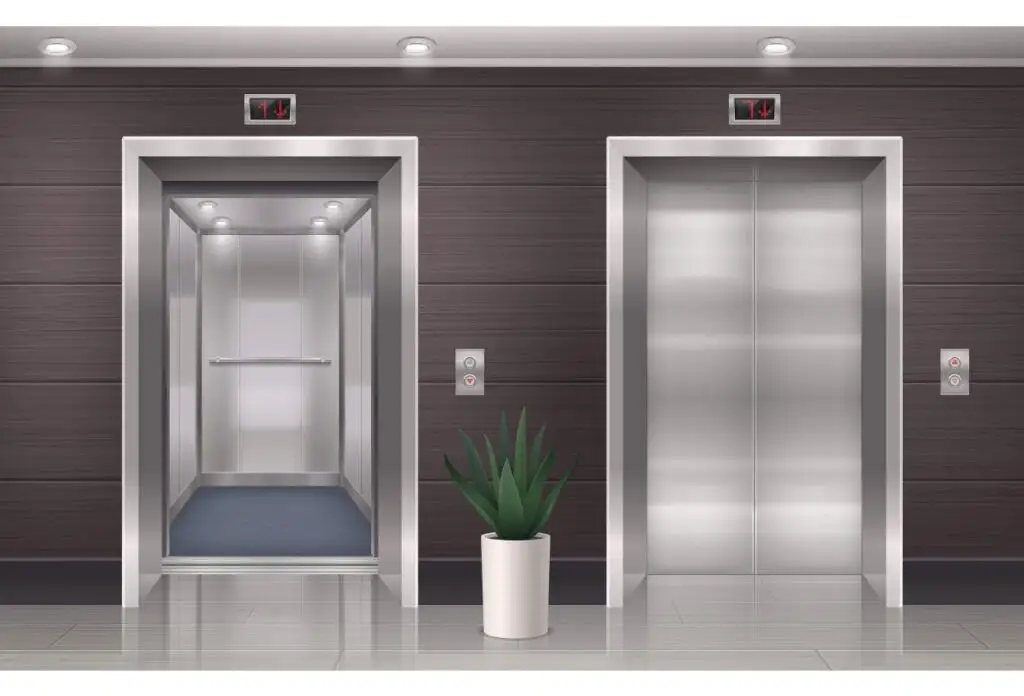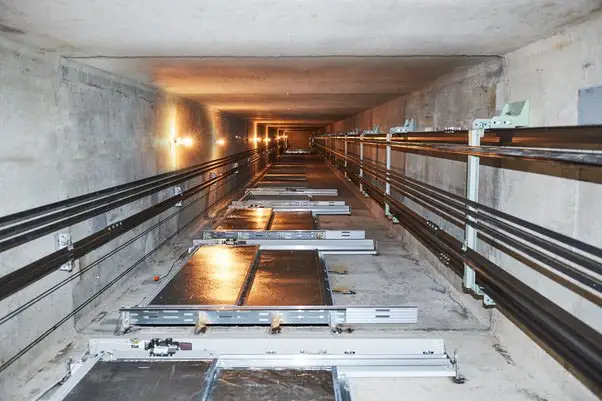Different Types of Elevator Dimensions
Ascensores de pasajeros
The most common kinds of elevators are ascensores de pasajeros, which are found in both residential and commercial buildings. To accommodate different capacities, standard dimensions for passenger elevators normally range from 3 feet by 4 feet to 5 feet by 8 feet. Some of the factors that affect the size include building occupancy, traffic patterns, and accessibility considerations.
Montacargas
Ascensores de carga are designed to be bigger than passenger elevators since they are made to move hefty loads and products. Although standard sizes differ, popular dimensions fall between 6 and 8 feet by 6 feet. The large-weight capacities of these elevators guarantee effective freight transit within buildings.
Residential Elevators
Residential elevators are often made to individual specifications. This is due to a varied list of reasons, from the purpose of installation, such as a solution for post-operative mobility, to a larger-than-normal home or the architectural design. The typical size of a residential elevator ranges from about 3 feet by 3 feet to 3 feet by 4 feet.
Ascensores hospitalarios
In hospitals, ascensores are a necessary system of mobility as they are used to transport medical equipment, stretchers, and wheelchairs. They are also used to transport patients when they are very sick and need help. Due to this, the standard dimensions for such elevators range from 5 feet by 7 feet to 6 feet by 8 feet.
Ascensores de coches
Car elevators, often found in parking structures and automotive showrooms, are tailored to the dimensions of vehicles. These elevators can vary widely in size, accommodating everything from compact cars to larger SUVs and specialty vehicles. Standard car elevator dimensions are influenced by the specific requirements of the intended vehicles.

Elevator Car, Shaft, Door Size
In this segment, we will look at the most important parts of elevator dimensions: door width, cabin size, and shaft size.
Elevator Door Width
An elevator’s door is the opening through which people and things get in, thus making it an extremely important aspect of its dimensions. The width allows for accessibility and ease of entry and exit. As such, having standardized elevator dimensions would ensure consistency across different buildings and environments, making elevators generally accessible.
Passenger Elevators: Standard door width dimensions for passenger elevators typically range from about 3 feet to 4 feet. This ensures that people can freely move in and out of the elevator without cramping each other out.
Freight Elevators: Freight elevators, due to their use for transporting cargo, often have larger doors than passenger elevators or residential elevators. As such, the door widths typically range from 4 feet to 5 feet, allowing for easy loading and unloading of cargo.
Residential Elevators: As residential elevators are usually found in homes and function to move a smaller number of people, wheelchairs, or furniture, their door widths typically range from about 2.5 feet to 3 feet.
Hospital Elevators: To be able to allow for smooth access for people and medical equipment, hospital elevator doors’ width typically ranges from about 3.5 feet to 4 feet.

Elevator Cabin Dimensions
The size of the elevator cabin can also have a direct impact on user comfort, capacity, and the entire experience of vertical transit. Modern standard cabin sizes are meant to strike a balance between space efficiency and the ability to seat a variety of passengers.
Standard passenger elevator cabin sizes range from 5 feet by 6 feet to 8 feet by 8 feet. These measurements make it easy to accommodate various building occupancies and traffic patterns.
Freight elevator cabins, which are larger and more robust, can range in size from 6 feet by 6 feet to 10 feet by 10 feet or more, depending on capacity and intended usage.
Cabin measurements for residential elevators are tailored to available space, with possibilities ranging from tiny 3 feet by 4 feet to bigger designs ideal for larger residences.
Hospital elevator cabins, on the other hand, are specifically constructed to accommodate stretchers and medical workers. The standard sizes range from 5 feet by 7 feet to 6 feet by 8 feet.
Dimensiones del eje del ascensor
The elevator shaft is a vertical tube through which the cabin travels. Accurate and standardized shaft dimensions are crucial to the elevator system’s smooth operation, structural integrity, and safety.
The size of the cabin typically determines the shaft proportions in standard passenger elevators. The typical shaft size ranges from 8 feet by 8 feet to 10 feet by 10 feet.
Due to the larger and heavier loads moved about, freight elevators require larger shafts to function effectively. The standard dimensions for freight elevator shafts range from 10 feet by 10 feet to 12 feet by 12 feet or more.
Residential elevator shaft sizes, on the other hand, are customized to meet the individual needs of the home. The typical dimensions range from 5 feet by 5 feet to 8 feet by 8 feet.
For hospital elevator shafts, the sizes correspond to the cabin proportions, just as in passenger elevators. Standard hospital elevator shaft dimensions typically range from 8 feet by 8 feet to 10 feet by 10 feet.

Conclusión
In determining what kind of elevator you would decide on for your project, the dimensions of the elevators, which include door width, cabin size, and shaft dimensions, are very important features to consider to ensure the efficiency, safety, and accessibility of such systems.
You also want an elevator system that is compliant with regulations and also meets all the necessary criteria. This is what Ascensores Dazen offers you.
Comuníquese con nosotros today, and you’ll be partnering with a company that has a track record and is capable of delivering a comprehensive range of elevators, available in various types and sizes, along with personalized customization services.
